
A few years ago, I was designing a garden for clients who, like me, are big fans of ornamental grasses. We had planted grasses in abundance on their previous property. Now they were planning a garden composed of informal beds within a formal design. Stymied, I decided to visit the old garden. Like an old friend I hadn’t seen in a while, it looked different to me. I realized that I had used grasses as hedges, along pathways, and as focal points and edgings. Rather than being seduced only by grasses’ colors, textures, and plumes, I began to see their architectural forms. Grasses can act visually like shrubs. Some are arching, others stiff and formal. They have different weights as well. It dawned on me that grasses could be used to define space in a garden.
With this new insight, I stopped worrying as much about which plants to use and focused on the forms I needed. Suddenly my ideas began to flow more easily. I used dense, arching forms as hedges and borders to define and enclose areas of the garden. I combined the many vertical shrubs and structures with strong, upright grasses. I chose looser, more open grasses to soften the strictness of the vertical elements. This resulted in a garden with forms that complemented each other, while the different varieties of grasses added subtle color and movement.
Short grasses can define an edge
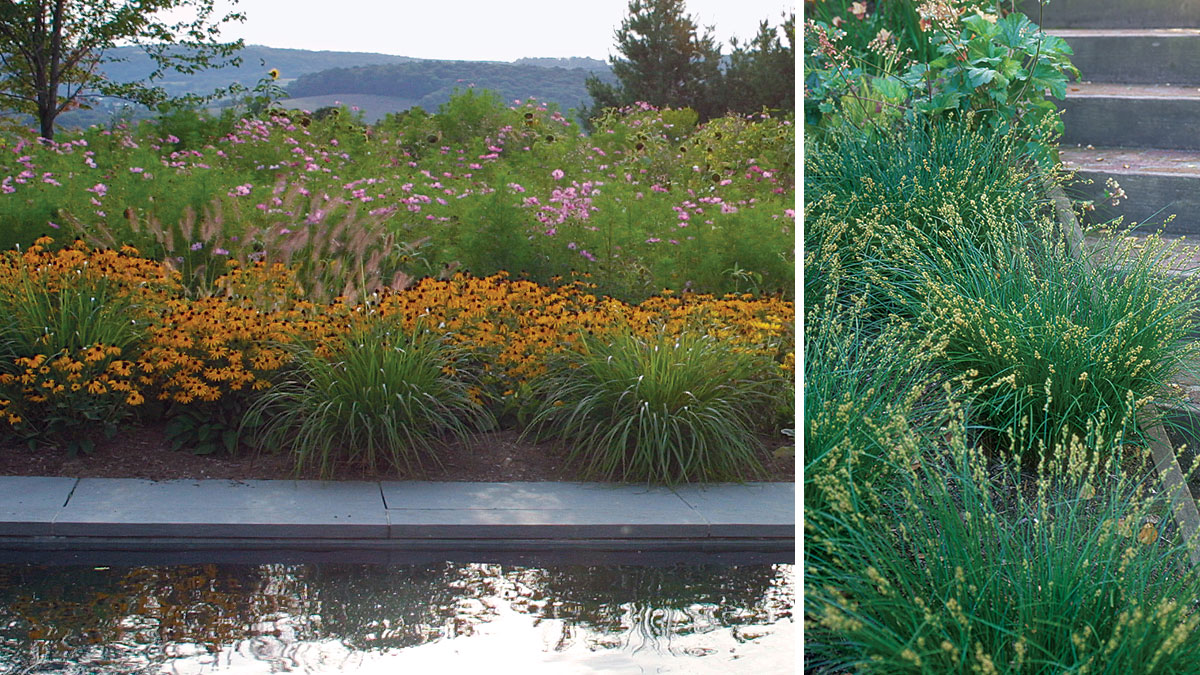
I’m always on the lookout for attractive edging plants that won’t fizzle by the end of summer. Edgings are important because they define the shape of a garden bed. Shorter grasses that complement and contrast with plants in a bed make excellent edges. They are neat, hardy, and fuss-free. Their clean lines spill gracefully onto a walkway without taking over. They can be used formally, but the plant itself is informal and loose—a dynamic contradiction of form.
Decide whether you want a soft edge or a hard one. Some grasses are compact and tidy and will lend a formal, tight look to your edges. Sedges (Carex spp. and cvs., USDA Hardiness Zones 3–9), which are not technically grasses but act like them, fall into this category. Softer edges are achieved by using grasses with wispy habits such as blue oat grass (Helictotrichon sempervirens and cvs., Zones 4–9) and small fountain grasses (Pennisetum spp. and cvs., Zones 6–11). Some of these grasses can look a bit unkempt and require more maintenance, so choose carefully.
Ornamental grasses make dynamic hedges
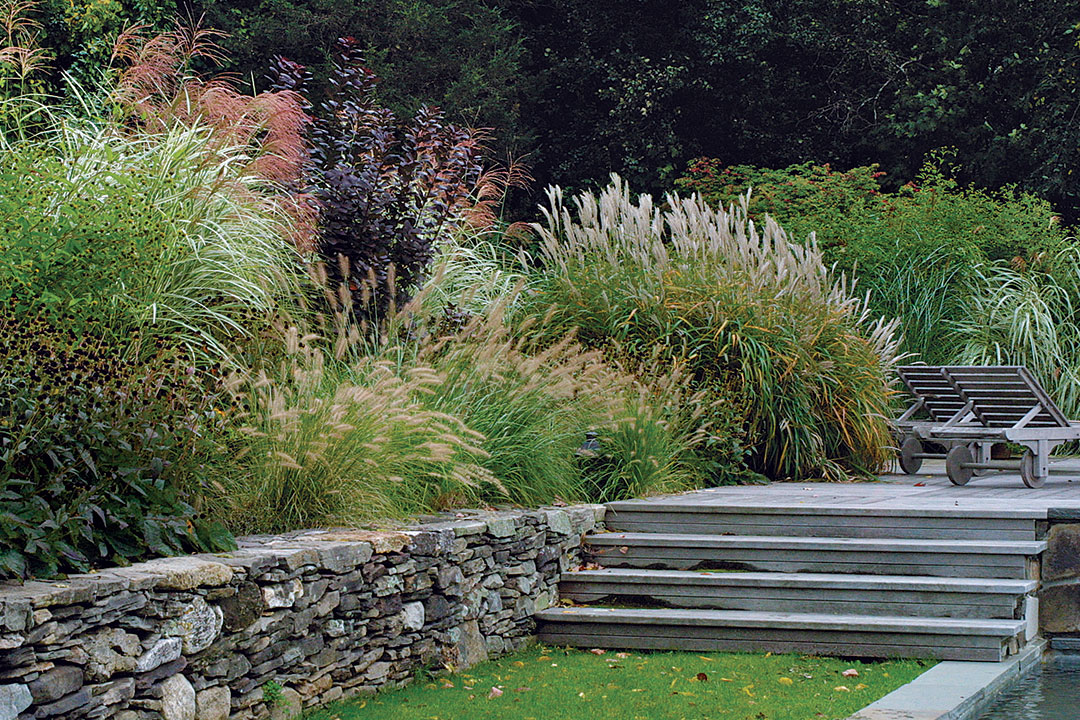
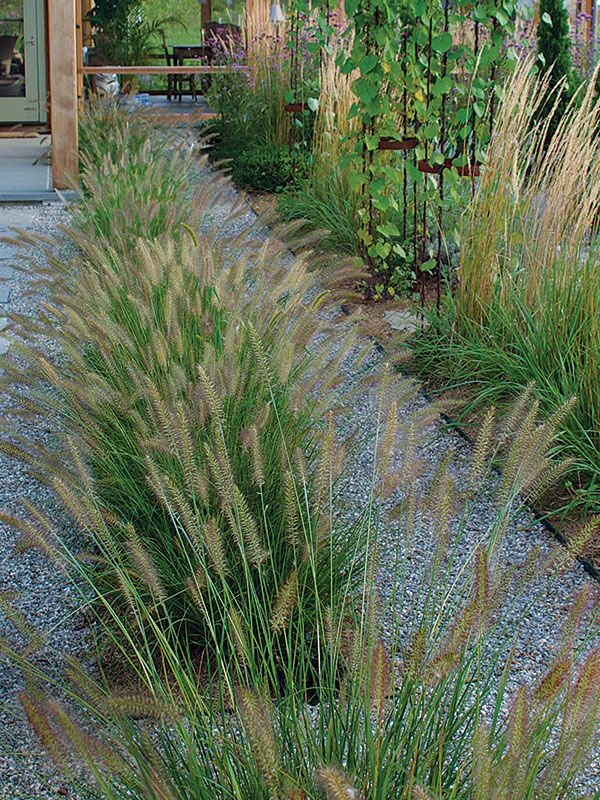
A hedge encloses an area, blocks a view, or creates privacy. Shrubs such as privets, yews, arborvitae, and boxwoods give a dense, heavy, evergreen statement to a garden. But what about using grasses? They don’t need pruning and are generally hardy. And if one dies, it’s easier—and less costly—to dig out and replace than an evergreen shrub.
Hedges made of grasses change through the seasons. You’ll have to accept that you’ll have no hedge in early spring, but the foliage and plumage that follow later in the season are worth waiting for. Because you will have only foliage until late summer, it’s important to think about what kind of texture and color you want and pick your plant accordingly. Most grasses start blooming in late August, and their subtly colored plumes are transformed as they age. I leave them in place all winter. The birds and I enjoy their strawlike colors and textural seed heads. I cut the hedge as close to the base as possible in early spring, saving time by using a gas-powered hedge clipper.
Deciding which grass to select depends on what I want the hedge to do. If it is for privacy, I prefer tall, dense varieties such as several of the miscanthus varieties (Miscanthus sinensis and cvs., Zones 6–9). To enclose an area without giving it a heavy look, I might choose switchgrasses (Panicum virgatum and cvs., Zones 5–9) or reed grasses (Calamagrostis × acutiflora and cvs., Zones 5–9). I also consider whether the planting is to be formal or informal. Switchgrasses and reed grasses have stiff, upright forms and are suited to formality. Miscanthus and fountain grasses are arching and dense, and work well for informal plantings.
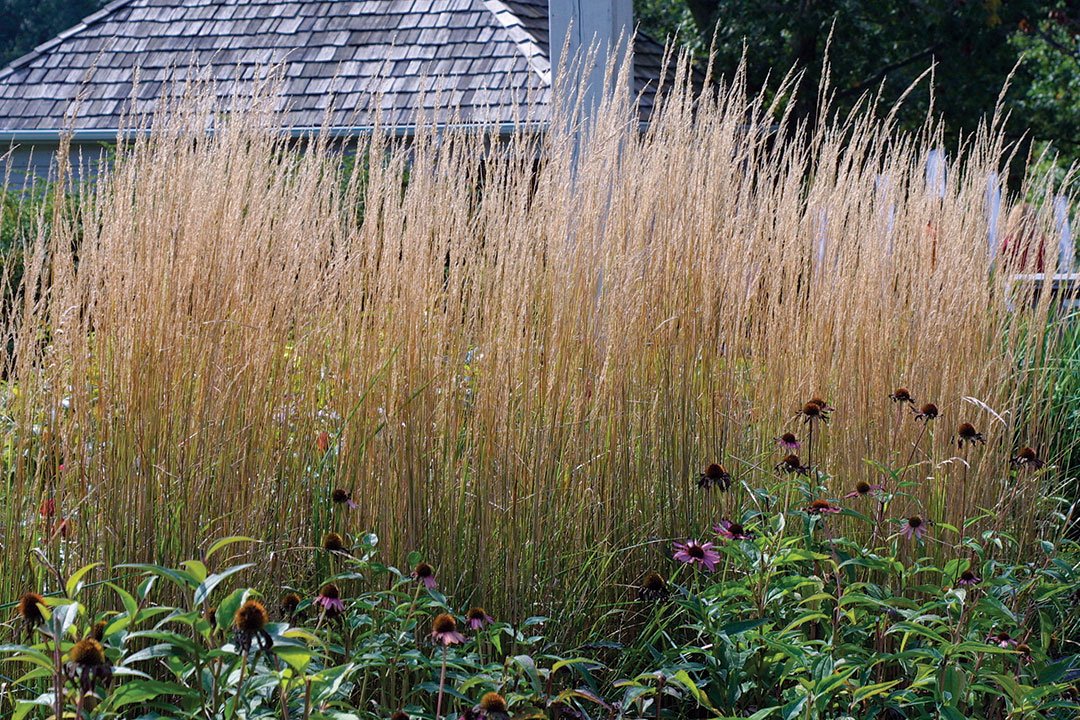
Masses of grasses create powerful visual statements

Planting a sea of grasses is an effective, low-maintenance way of dealing with large areas. Which grasses I choose for a mass planting depends on the location of the garden and the vantage point of the viewer. For beds seen at a distance, an expanse of tall, thick grasses—such as miscanthus or fountain grass, or a heavy switchgrass like Panicum virgatum ‘Shenandoah’—is effective for stopping the eye. Or I might want to walk through the planting and be able to see through it. Using light-textured grasses such as a reed grass, tufted hair grass (Deschampsia cespitosa and cvs., Zones 5–9), or wispy switchgrass like Panicum virgatum ‘Dallas Blues’ would help create a transparent look. If I’m facing a bed head-on from a first-floor window, I might want to graduate the heights of the grasses, resulting in a slope of different textures and colors.
Grasses also mix well with each other. I like to contrast thin and thick foliage, creating subtle palettes of color. A few of my favorite texture and color contrasts are Miscanthus sinensis ‘Gracillimus’, with its graceful, narrow, green-and-white blades, and Miscanthus sinensis ‘Variegata’, which has bold, broad, green-and-white blades. Panicum virgatum ‘Shenandoah’, which has reddish blue foliage, jumps out in a bed of other blue Panicum cultivars such as ‘Heavy Metal’, an upright, metallic blue grass that turns yellow in fall. Miscanthus sinensis ‘Zebrinus’, with its bold, gold, horizontal bands, paired with the delicate, gold foliage of Miscanthus sinensis ‘Pünktchen’ is an energetic study in color and texture.
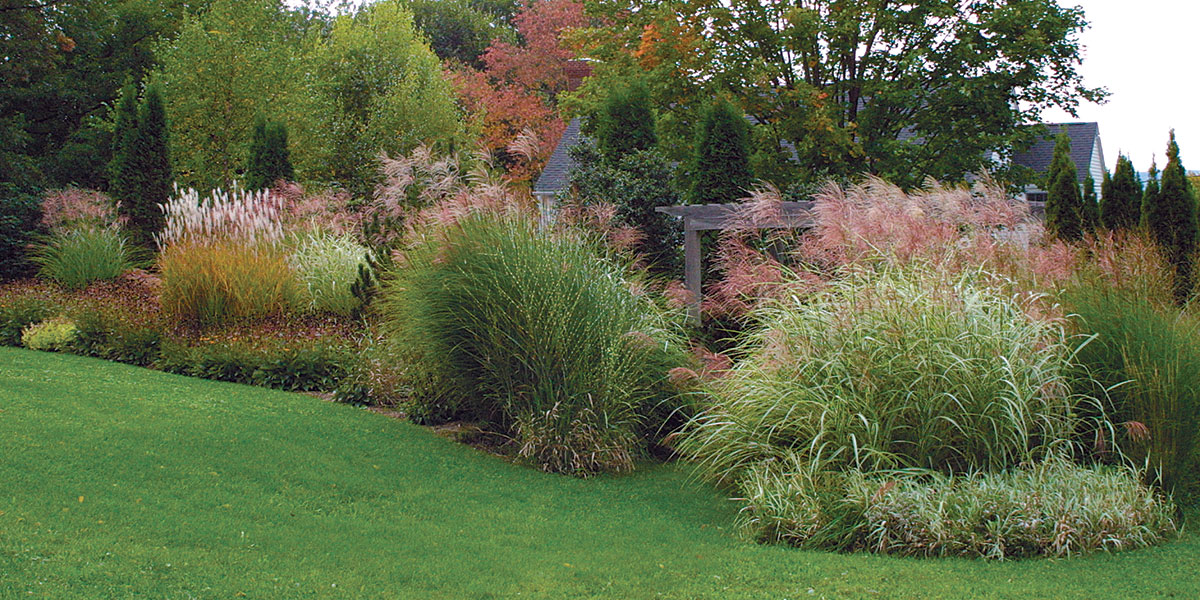
I also suggest using contrasting plumes. I like using Pennisetum alopecuroides ‘Moudry’, which has purply black inflorescences, along with Pennisetum orientale ‘Karley Rose’, which has pale pink inflorescences. Experimenting with contrast has led to some of my best color and texture combinations.
Being aware of the forms of grasses has changed how I use these plants in my designs. In fact, even as I rely on grasses to set new boundaries in the garden, I’ve freed myself from some old design constraints.
Christine Froehlich is a garden designer in Sodus Point, New York.
Find more great grasses in Fine Gardening‘s Plant Guide.

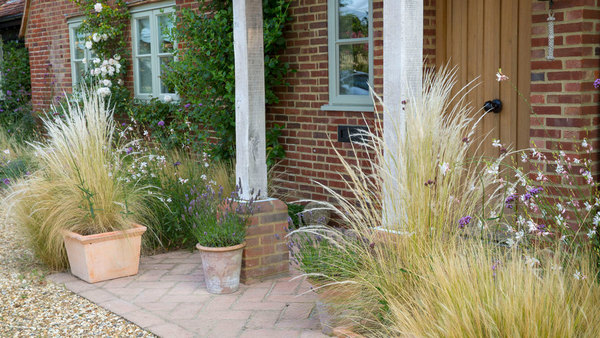
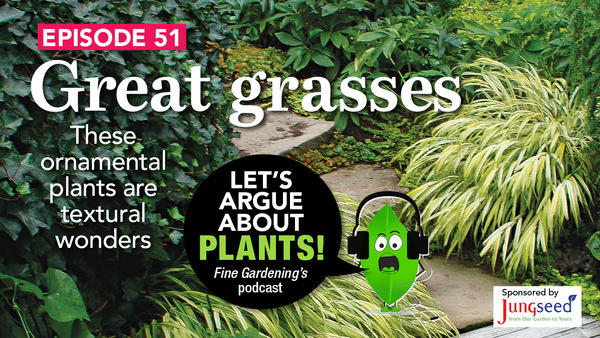
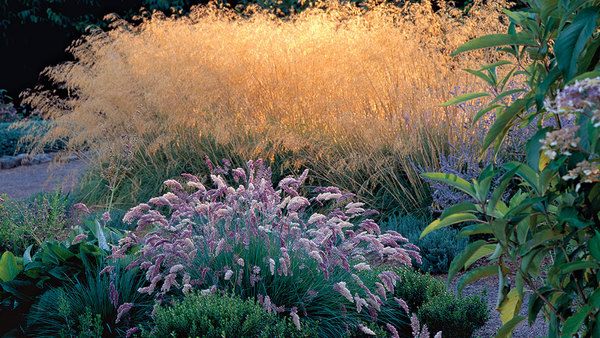

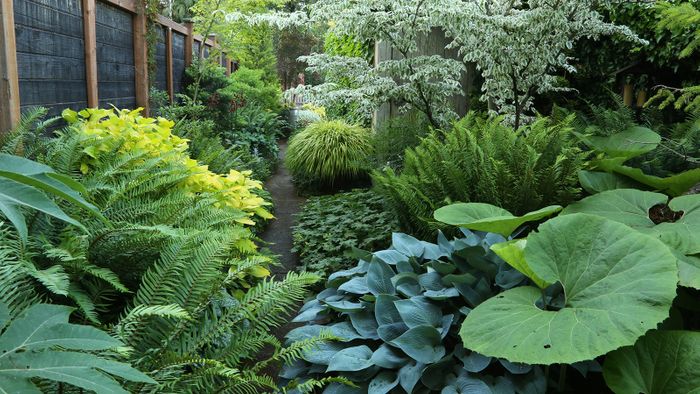
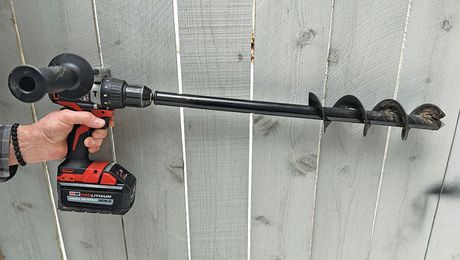






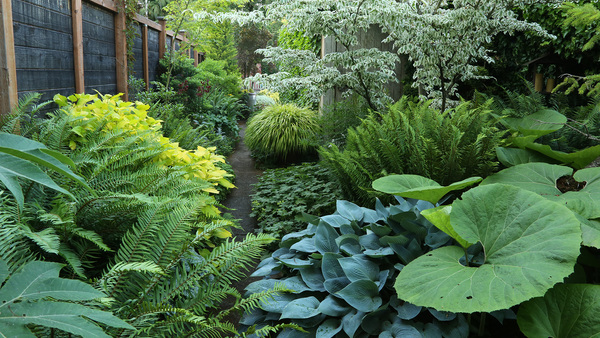



Comments
Just found out how useful Maiden grass can be.. check mine at https://www.gardenloka.com/maiden-grass/
great article. I just worry about invasion problems with non-native plants, especially grasses
Love the idea of using tall grasses as screens - beautiful photos.
There are the great article for the all users just save documents windows 10 here and access the all file and folder easily.
Log in or create an account to post a comment.
Sign up Log in